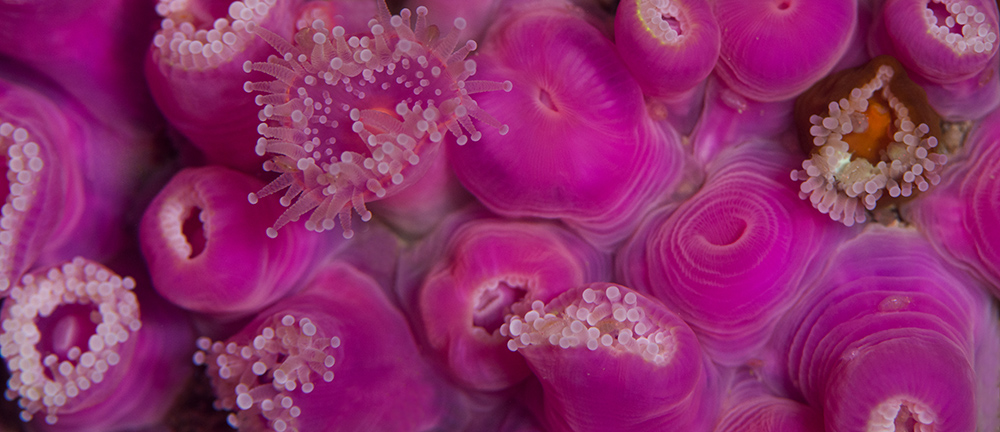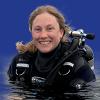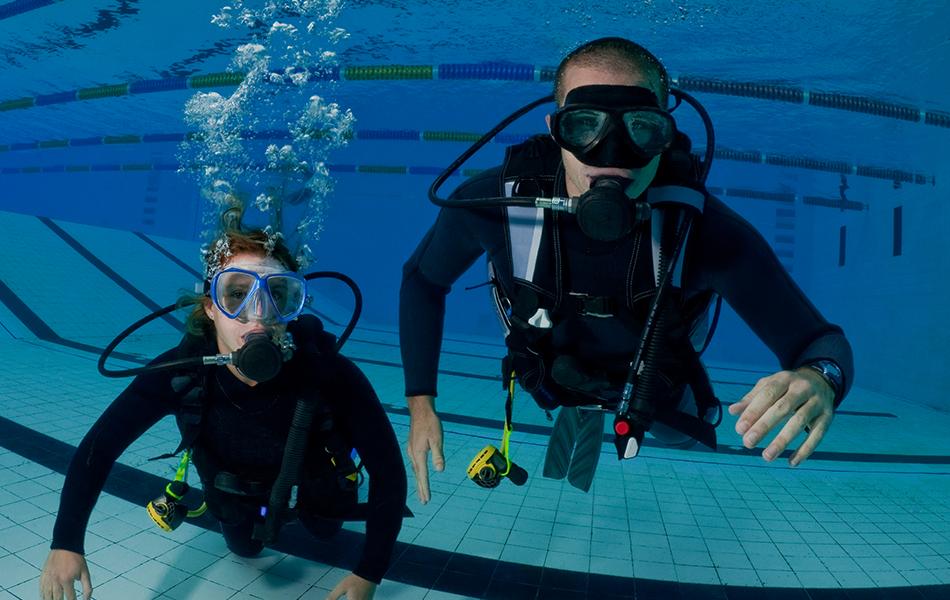
Kirsty Andrews turns her gaze to the world of the super-tiny, which is both a test of diving ability and a buddy’s patience.
Jewel anemones used to be the height of fashion among underwater photographers and small-things-lovers, and then one day someone spotted a miniature crustacean, an amphipod, waving cheerily from between the polyps. Gradually, we realised that these industrious little beings were everywhere, making the fingertip-sized jewels look rather large by comparison. Then there was a gangly skeleton shrimp wafting its boxing-glove arms in between the polyps with a veritable nursery of young’uns clambering all over it. This year, my buddy saw both at once and spent a happy few minutes watching the fascinating interactions between the crustaceans: I won’t reveal the details but it was a small-scale drama.
The first time I saw a skeleton shrimp I fear I’d already caused its demise: surfacing from a wreck dive in Scapa Flow after innocently hanging out by the shot line for a few minutes on my way up, the little blighters managed to affix themselves all over my drysuit. With those tenacious claws, picking them off was a challenge. I definitely prefer to admire them underwater.
where I see a tiny colourful dot, on a hydroid for example, and although I can’t make out details with the naked eye, I take a photo anyway and if I zoom in on my screen later, I may discover something fascinating
Safety stops can be a good time to look for the small stuff: the fun of the dive isn’t yet over, oh no. Drifting past, maybe there’s a hitchhiking crustacean or a juvenile fish hiding on or in a jellyfish, or a larval shrimp doing cartwheels with boundless energy. On a week’s diving on the North coast of Scotland, the only time I’ve ever seen them, the top metre or so of water was sprinkled with tiny pteropods. They looked like bobbing pinheads until they decided to move and opened up wings, becoming golden snitches Harry Potter editor. What a treat to see.
It has got to a point now where I see a tiny colourful dot, on a hydroid for example, and although I can’t make out details with the naked eye, I take a photo anyway and if I zoom in on my screen later, I may discover something fascinating! Or nothing…

Jewel anemones
This may reflect badly on my deteriorating eyesight - still 20:20 in my mind - or is it more that I’m an underwater Alice, peering through the looking glass, and as I stare closely, this tiny world opens up and reveals its treasures? Perhaps I should drink a potion and be transported to the size of sea slug… or talking of glass, maybe I could carry a magnifying one around with me, Sherlock-Holmes-style. I have seen it done underwater and I may have scoffed a little at the time, but now I start to see the appeal.
Have I captured your imagination? Will you look more closely on your next dive, and see what miniature mysteries are unfolding on your favourite dive site? Divers tend to fall into two camps on this: some swim by at such a pace that the details don’t make even a glancing impression: they do manage to circumnavigate the site though. Or there’s the fascinated observer who can lose track of the seconds and minutes just watching the goings-on in a square centimetre. I think you know which one I am: which are you?
Article ‘It’s a small world’ by Kirsty Andrews, first published in SCUBA magazine, Issue 141 December 2023.

 Author: Kirsty Andrews | Posted 12 Dec 2023
Author: Kirsty Andrews | Posted 12 Dec 2023



